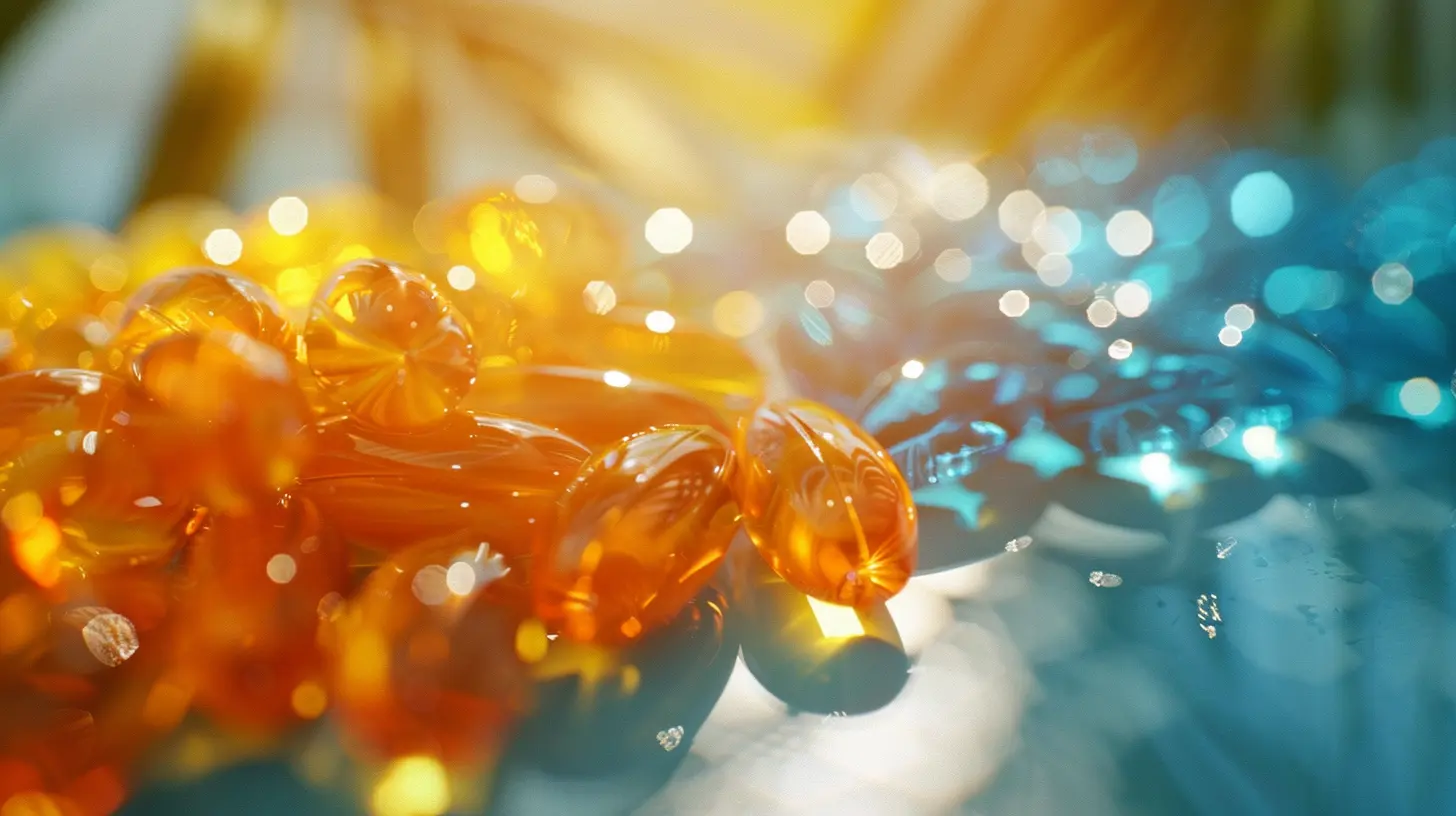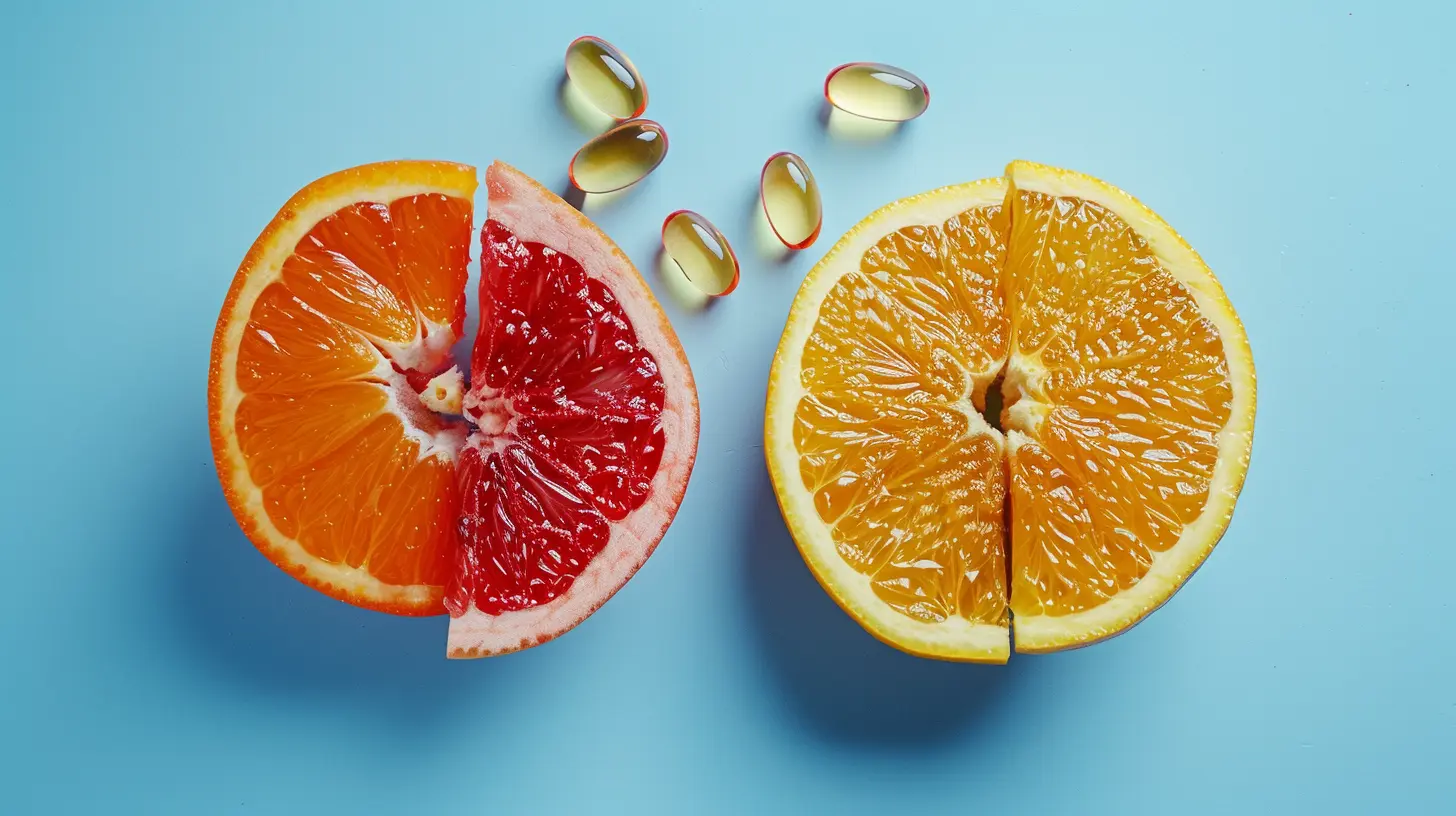Vitamin D3 vs. D2: Key Differences and Why It Matters
25 October 2025
Let’s talk about something that often pops up when we think about vitamins and supplements—vitamin D. You’ve probably heard people mention it when talking about bone health, immunity, or even sunlight. But here’s the twist. There’s not just one type. Vitamin D comes in two main forms: D2 and D3. And while they sound pretty similar, they’re not quite the same on the inside—or in the way your body handles them.
So, what's the deal with vitamin D3 vs. D2? Which one's better? Why does it even matter? Grab your favorite cup of tea (or coffee), and let's break it down.
What Is Vitamin D Anyway?
Before we pit D2 against D3, let’s talk about what vitamin D actually is.Vitamin D is a fat-soluble vitamin that your body needs to help absorb calcium and phosphorus—two minerals that are crucial for keeping your bones strong and healthy. But its benefits don’t stop there. Vitamin D also plays a major role in immune function, mood regulation, and even inflammation control.
Unlike other vitamins, your body can make its own vitamin D when your skin is exposed to sunlight. That’s right—your skin is like a solar panel, generating vitamin D when it catches those rays. But with less sun exposure (thanks to our love of sunscreen and indoor living), many people turn to food or supplements to keep their levels up.
Meet the Two Main Players: Vitamin D2 and D3
Okay, now let’s focus on our two contenders.Vitamin D2 (Ergocalciferol)
- Comes from plant sources like mushrooms exposed to UV light- Often found in fortified foods (soy milk, cereals, orange juice)
- Usually prescribed in high doses for vitamin D deficiency
Vitamin D3 (Cholecalciferol)
- Comes from animal sources such as fatty fish, egg yolks, and liver- Also produced in your skin from sunlight
- Commonly used in over-the-counter supplements
So, both D2 and D3 help you boost your vitamin D levels. But that’s where the similarities end.
So, What’s the Real Difference Between D3 and D2?
Here’s the big question: If both help increase vitamin D levels, what’s the point of choosing one over the other?Let’s look at three key differences that make D3 stand out.
1. Bioavailability: How Well Your Body Uses It
This is where things start to separate. Vitamin D3 is more bioavailable, meaning your body prefers it and uses it more efficiently. Basically, if your body had to pick a favorite, it’d swipe right on D3.Studies have shown that D3 is more effective at raising and maintaining vitamin D levels in your blood. D2 might give you a quick boost, but D3 keeps you going for the long haul.
2. Stability: How Long It Lasts In Your Body
Vitamin D3 is more stable. It sticks around in your system longer, which makes it better for maintaining consistent levels. D2, on the other hand, breaks down quicker and may not provide the sustained benefits you’re after.Think of it this way—D3 is like that reliable friend who shows up on time and stays late to help clean up. D2? A little flaky. Shows up, helps for a bit, then vanishes.
3. Potency: How Strong Its Effects Are
Even when taken in equal doses, D3 is often more potent. That means you may need a higher dose of D2 to get the same results you'd achieve with a smaller dose of D3.
Why This Difference Actually Matters
Now you might be thinking, “If both work, does it really matter which one I take?” Short answer? Yes, it does. Especially if you're dealing with a deficiency or trying to optimize your levels.For People With Low Vitamin D
If you’re deficient, getting the most bang for your buck matters. D3 is more effective at raising serum 25(OH)D levels—basically, the measure doctors use to check your vitamin D status.For Long-Term Supplement Users
If you’re taking vitamin D as a part of your wellness routine, D3 is the steady, reliable form that keeps your levels up without constant big-dose corrections.For Plant-Based Lifestyles
Here’s the curveball—since D3 is usually from animal sources, vegans and vegetarians often get D2 instead. But there’s a solution! Some newer D3 supplements are plant-based, made from lichen. Yep, D3 for everyone!Food Sources: Where You Get Them Naturally
Alright, let’s check out where these vitamins hide in your kitchen.Vitamin D2 Sources
- Mushrooms exposed to UV light (think portobellos)- Fortified plant-based milks (soy, oat, almond)
- Fortified cereals and juices
Vitamin D3 Sources
- Fatty fish like salmon, sardines, and mackerel- Egg yolks
- Cod liver oil
- Beef liver
- Fortified dairy products
Most natural sources of D3 are animal-based, which is important to keep in mind depending on your diet preferences.
Supplements: What to Look For on the Label
If you’re shopping for a vitamin D supplement and scratching your head at the options, here’s what to check:- Look for “Cholecalciferol” – that’s the scientific name for D3.
- Choose reputable brands – not all supplements are created equal.
- Check for third-party testing – ensures you’re getting what’s on the label.
- Vegan? – Search for “plant-based D3” or D3 derived from lichen.
Absorption Tips: Get the Most Out of Your Vitamin D
Here’s a little secret—fat helps your body absorb vitamin D better. So whether you’re eating it from food or taking a supplement, pair it with some healthy fats like avocado, nuts, or olive oil.And if you’re taking a supplement, try doing it with your biggest meal of the day. That’s when absorption rates are highest.
Sunshine: The OG Source of D3
We can’t talk about vitamin D3 without shouting out the sun. Your skin makes D3 when exposed to UVB rays. But here’s the kicker—seasons, skin color, age, sunscreen use, and where you live all affect how much D3 you can make.In winter or if you’re living far from the equator, your natural vitamin D factory might shut down. That’s when supplements can really step in to save the day.
Side Effects and Safety
Vitamin D is generally safe when taken as recommended, but more doesn’t always mean better. Going overboard—especially with mega doses—can lead to vitamin D toxicity. Symptoms might include nausea, vomiting, weakness, and even kidney problems.Stick to what your doctor recommends, and always read the label.
How Much Vitamin D Do You Actually Need?
The Recommended Dietary Allowance (RDA) varies by age, sex, and life stage. Here’s a quick cheat sheet:| Age Group | RDA (IU/day) |
|-------------------|--------------|
| Infants (0–12 mo) | 400 |
| Children (1–18 yr)| 600 |
| Adults (19–70 yr) | 600–800 |
| Adults (71+ yr) | 800 |
| Pregnant/Breastfeeding Women | 600–800 |
If your levels are low, your healthcare provider may recommend higher doses temporarily to get you back on track.
The Verdict: D3 Comes Out on Top
To wrap it all up—when it comes to vitamin D2 vs. D3, D3 takes the crown. It’s more effective, more stable, and more potent. That doesn’t mean D2 is bad, but if you have the choice, D3 is usually the better pick.And remember, it’s not just about grabbing a supplement and calling it a day. Think about your diet, how much sun you’re getting, and whether your habits support healthy vitamin D levels.
Bottom line? If you’re aiming for optimal health (and who isn’t?), paying attention to which type of vitamin D you’re taking is more important than you might think.
Final Thoughts
It may seem like a small detail—D2 vs. D3—but when it comes to your health, small things can make a big difference. Whether you’re picking up a supplement from the pharmacy or planning your meals, knowing what your body really needs puts you in control.So next time someone brings up vitamin D, you’ll know exactly why it matters—and why choosing the right form isn’t just smart, it’s essential.
all images in this post were generated using AI tools
Category:
VitaminsAuthor:

Arthur McKeever
Discussion
rate this article
1 comments
Paxton Ortiz
Great article! Understanding the differences between Vitamin D3 and D2 is crucial for informed health decisions. Thank you for shedding light on this important topic!
November 8, 2025 at 4:31 AM

Arthur McKeever
Thank you for your kind words! I'm glad you found the article helpful in understanding the importance of Vitamin D3 and D2.


